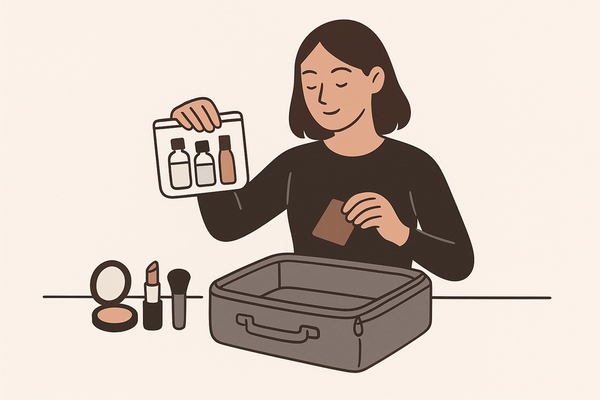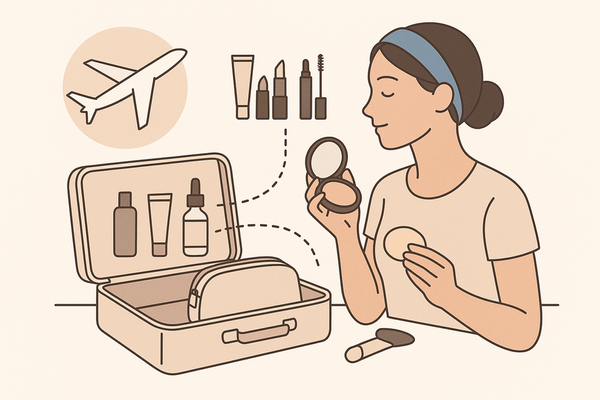Creative Makeup Designs: A Complete Guide to Artistic Makeup Mastery
Discover how creative makeup designs transform faces into art with our complete guide. Learn techniques, tools, and trends in artistic makeup mastery.

Estimated reading time: 7 minutes
Key Takeaways
- Art as Canvas: Creative makeup transforms the face or body into an expressive, avant-garde canvas.
- Core Techniques: Master contouring, blending, highlighting, graphic lining, and special effects.
- Color & Materials: Leverage color theory plus unconventional items like gems, metallic foils, and prosthetics.
- Structured Process: From concept development to finishing touches, a clear workflow ensures precision and impact.
- Future Trends: Look ahead to AR/VR integration, sustainable tools, and AI-driven enhancements.
Table of Contents
- Understanding Creative Makeup Designs
- Key Elements of Creative Makeup Designs
- Step-by-Step Creative Process
- Tools & Products for Creative Makeup Designs
- Inspiring Examples & Case Studies
- Trends & Future of Creative Makeup Designs
- Bringing AI into Creative Design
- Conclusion
- FAQ
Understanding Creative Makeup Designs
Creative makeup designs blend art and self-expression into cosmetic routines. They go beyond contouring and shadow play, crafting visually striking, narrative-driven transformations by merging classic techniques with innovative materials.
Scope and Evolution
- Scope: Moves past feature enhancement to thematic, artistic expressions.
- Self-Expression: Conveys mood, identity, or fantasy through color and form.
- Evolution:
- From traditional beauty standards to bold, multidimensional creations.
- Fueled by new tools, materials, and global social-media collaboration.
Makeup as narrative art has grown with digital trends and AI-driven tools (see our AI Makeup Coach: Your Guide to the Future of Beauty-Tech & Innovation), and social platforms fuel rapid innovation worldwide.
Key Elements of Creative Makeup Designs
Breaking down creative makeup designs reveals the technical and artistic building blocks. Master these to unleash bold, story-driven looks.
- Techniques
- Contouring: Sculpt features with light and shadow.
- Blending: Create smooth color transitions.
- Highlighting: Accentuate high points for dimension.
- Graphic Lining: Draw precise lines, shapes, and patterns.
- Special Effects: Use prosthetics, 3D embellishments, and textures.
- Color Theory
- Complementary schemes (e.g., blue & orange) for pop.
- Analogous schemes (e.g., pink, red, orange) for seamless gradients.
- Psychology: Warm hues energize; cool tones calm.
- Materials
- Standard: Creams, powders, pigments.
- Unconventional: Face gems, pearls, metallic foils, latex, fabric.
- Artistry & Innovation
- Experiment with textures and themes: fantasy, runway, avant-garde.
- Combine fine-art concepts with makeup tools.
- Standout Trends
- Neon graphic eyeliners in geometric & organic forms.
- 3D rhinestones and sticker applications.
- Seasonal transformations for festivals and holidays.
Step-by-Step Creative Process
- Concept Development
- Gather inspiration: mood boards, sketches, face charts.
- Use Pinterest, art history books, and fashion editorials.
- Planning & Prep
- Skin prep: cleanse, moisturize, apply primer.
- Color palette: choose complementary or analogous schemes.
- Face chart mapping: mark where each element will go.
- Technique Application
- Base layers: foundation and contour first.
- Add color layers: use blending brushes for smooth fades.
- Precision details: fine-liner brushes for dots, lines, stencils.
- Embellishment Phase
- Attach gems and foils with skin-safe glue.
- Secure prosthetics: blend edges with wax or silicone.
- Finishing Touches
- Set makeup: use translucent powder or setting spray.
- Ensure longevity for photos or performances.
- Experiment & Iterate
- Use micellar water or sponges for corrections.
- Watch tutorials like our Avant-Garde Makeup Trends and study advanced case studies.
Tools & Products for Creative Makeup Designs
Having the right gear makes daring designs possible. Invest in quality items for precision and bold color:
- Brushes: Blending, angled, shader, liner brushes.
- Pigments & Palettes: Cream pigments, water-activated paints, alcohol-based colors.
- Sponges & Face Charts: Stippling sponges, pre-printed charts.
- Specialized Materials: Professional primers, skin-safe adhesives, rhinestones, metallic foils, prosthetic kits.
Inspiring Examples & Case Studies
See how top artists push limits. Study their methods to fuel your own creativity:
- Pat McGrath: Editorial avant-garde statements.
- James Charles: Fantasy transformations with social-media flair.
- Toshiya: Intricate floral motifs and 3D details.
Trends & Future of Creative Makeup Designs
Stay ahead by knowing what’s next. The field evolves with tech and sustainability:
- Hybrid Artistry: AR/VR filters combined with real-life makeup.
- Sustainable & Inclusive: Eco-friendly brushes and expanded shade ranges.
- Social Media’s Role: Viral challenges accelerate trend cycles.
- Tech Infusion: 3D printers for custom prosthetics, smart pigments, digital sketch apps.
Bringing AI into Creative Design
For artists exploring AI-enabled workflows, Makeup Check AI provides instant virtual try-ons, shade analysis, and color-balance feedback to refine your avant-garde creations.
Conclusion
Creative makeup designs fuse technical skill with artistic vision. We’ve defined the concept, reviewed its evolution, and broken down essential elements. Following a clear process and investing in quality tools can turn any idea into a show-stopping look. Inspiring artists and case studies show what’s possible, while future trends hint at eco-friendly, digital, and hybrid approaches that will reshape cosmetic artistry.
Embrace experimentation: try one new technique per week, explore tutorials and courses, and join community forums to grow. Share your art on social media with a branded hashtag to connect with a global network of creative makeup designers.
FAQ
- What is creative makeup design?
Creative makeup design transforms the face or body into an artistic canvas, combining color theory, fine-art principles, and innovative materials for expressive looks. - How do I start with avant-garde makeup?
Begin by gathering inspiration—mood boards or face charts—then practice core techniques like layering, blending, and graphic lining. Gradually introduce embellishments. - What materials are essential?
Start with quality brushes and pigments, then explore unconventional items such as rhinestones, metallic foils, and safe adhesives to push your creativity. - How can AI enhance my designs?
AI tools offer virtual try-ons, personalized shade matching, and real-time feedback on color balance, helping you refine avant-garde concepts before application.




